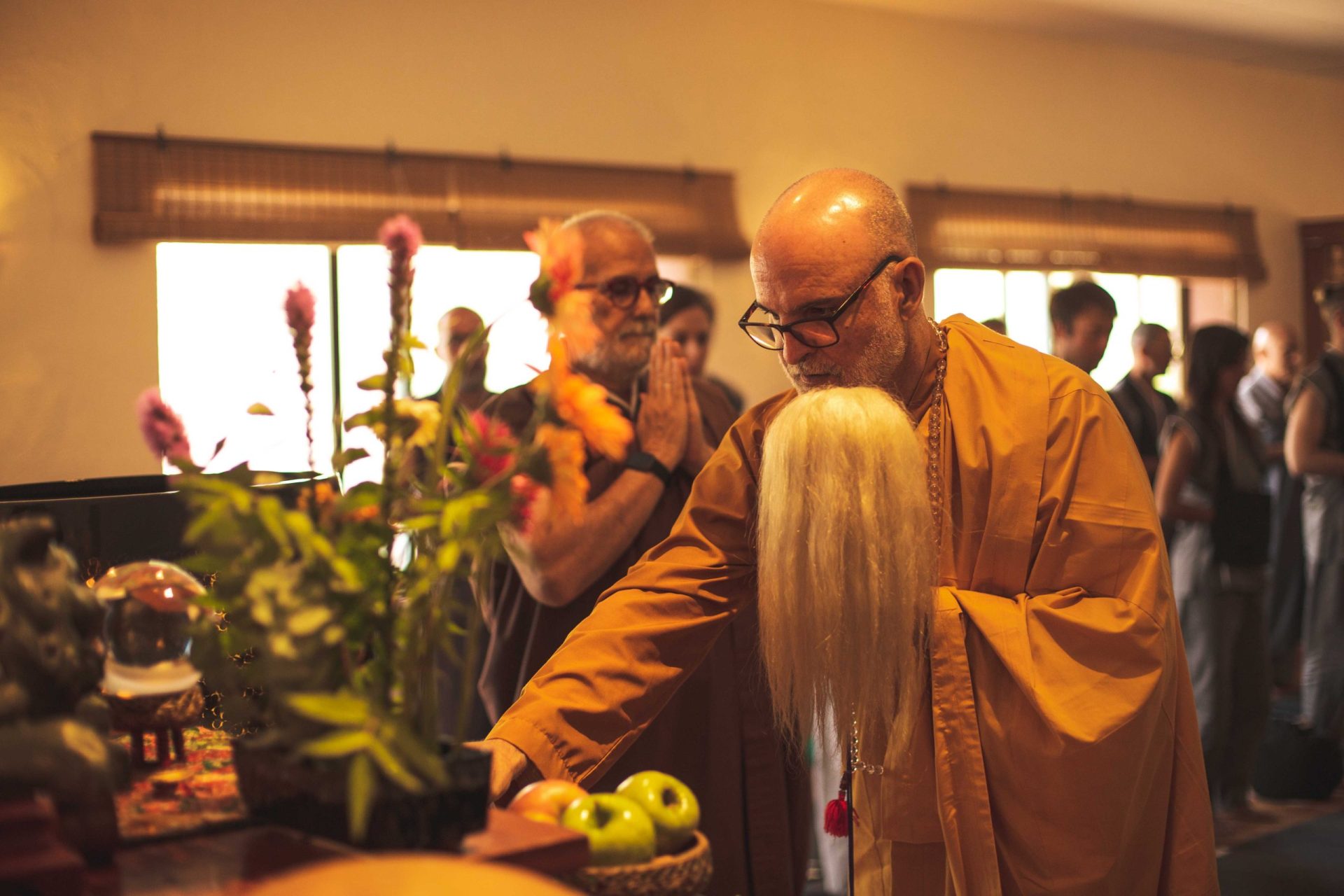⏱️ Estimated reading time: 10 min
Buddhism is a complex spiritual tradition that has evolved over the centuries and has adapted to the different historical cultures and contexts in which it has developed. One of the fundamental teachings of Buddhism is the idea of “Three vehicles” (Sanskrit: Triyana), which are three different paths or methods to achieve lighting, The ultimate goal of Buddhist practice. These three vehicles are: The vehicle of arhat, The vehicle of Pratyekabudha and the vehicle of bodhisattva. Each of these paths represents a different way of approaching the liberation of suffering, known in Buddhism as nirvana.
Origins of the three vehicles
The three vehicles developed in response to different spiritual needs and abilities. The concept has its roots in the first teachings of the Buddha, but it was more explicitly articulated as Buddhism expanded and diversified. The Arhat vehicle is mainly associated with school Theravāda, which is the oldest of the Buddhist traditions and that remains prominent in the south and Southeast Asia. The vehicles of the Pratyakabudha and the bodhisattva, on the other hand, They developed more fully in the traditions of the Mahayana, India bloomed in India, China, Japan, Tibet and other parts of Asia.
Each of these vehicles is based on the teachings of the Buddha, but emphasizes different aspects of the practice and offers a different vision of the road to the awakening. However, It is important to point out that, although they present themselves as different, These vehicles are not exclusive, They are different expressions of the same spiritual path.
Arhat's vehicle
The term arhat it comes from the Sanskrit and generally translates as “worthy” o “venerable”. In the context of Buddhism, An Arhat is someone who has reached Nirvana through personal practice and individual effort. The Arhat path focuses on the personal liberation of the birth and death cycle, known as samsara. For the arhats, The main objective is to eradicate all forms of desire, aversion and ignorance, What are the roots of suffering, and reach a state of peace and final liberation.
Arhat road characteristics
The Arhat path is deeply rooted in the original teachings of the Buddha, especially those found in the Clip o Canon Pali, which is the oldest collection of Buddhist writings. Arhat's practice implies a rigorous moral discipline and a deep practice of meditation. There are several key aspects on this path:
1. Ethics (Sila): The Arhat path begins with adherence to a strict ethical code, which includes the observance of Cinco Precepts For lay people and Vinaya For monks and nuns. These precepts They are fundamental to purifying the mind and creating the necessary conditions for spiritual development.
2. Meditation (Samadhi): Meditative practice is central on the road to Arhat. Through meditation, practitioners cultivate the concentration and mental clarity necessary to see the true nature of reality. Meditation allows practitioners to transcend worldly distractions and experience deep states of calm and inner peace.
3. Wisdom (Prajna): The final objective of the Arhat is to develop the wisdom that leads to the direct understanding of the impermanence (anicca), he suffering (dukkha) and the absence of a permanent self (Anatta). This understanding dissolves the illusions that perpetuate the Samsara cycle and allows the Nirvana to be achieved.
Achievement and meaning of Nirvana
For the arhats, The Nirvana is the final goal and represents the complete release of suffering and the Renaissance cycle. It is a state in which all mental impurities have been extinguished, and the practitioner experiences a lasting peace that transcends all forms of suffering. In the tradition Theravāda, Arhat's state achievement is considered the pinnacle of Buddhist practice.
Nirvana is described in Buddhist texts as an ineffable state, that transcends words and concepts. It is not simply the cessation of suffering, but the realization of a deep peace and absolute freedom. Although the Arhat path focuses on personal liberation, The Buddha taught that this achievement also benefits others, since Arhat's example inspires others to follow the path of virtue and wisdom.
The Pratyekabha Vratyekabha
Buddhism is a complex spiritual tradition that has evolved over the centuries and has adapted to the different historical cultures and contexts in which it has developed. One of the fundamental teachings of Buddhism is the idea of "Three vehicles" (Sanskrit: Triyana), which are three different paths or methods to achieve lighting, The ultimate goal of Buddhist practice. These three vehicles are: The vehicle of arhat, The vehicle of Pratyekabudha and the . . .
The full content of this section is only available to members, Registration is free, accede with your username or high dates. |
3. Compassion and wisdom: Compassion is the driving force of bodhisattva. And bodhisattva Liberation is not enough while other beings continue to suffer. At the same time, Wisdom is crucial to guide this compassion effectively, ensuring that the actions of the bodhisattva are aligned with the true nature of reality.
4. Voluntary rebirth: Unlike Arhat, that leaves the Renaissance cycle when reaching Nirvana, he bodhisattva Choose Renacer again and again in the Samsara to help all beings. This voluntary rebirth is an act of supreme compassion, and the bodhisattva uses its existence in the Samsara to guide others on the road to lighting.
El Bodhisattva Ideal: Avalokiteshvara
One of the most outstanding examples of a bodhisattva es Avalokiteshvara (In Sanskrit: Avalokiteśvara), also known as Win in China and Stump In Japan. Avalokiteshvara es el bodhisattva of compassion and is venerated throughout Asia as a being who listens to the regrets of the world and works tirelessly to relieve the suffering of all beings. In many artistic representations, Avalokiteshvara tiene Multiple arms and eyes, symbolizing their ability to help all beings in multiple dimensions.
Avalokiteshvara is a perfect example of the ideal of bodhisattva, since it embodies both compassion and wisdom in its highest form. His vote of working for the liberation of all beings makes him a model to follow for Mahayana practitioners, who aspire to emulate their dedication and commitment.
Comparison of the three vehicles
Although the three vehicles are different in their approaches and objectives, All of them are united by the common teaching of noble truth of suffering and the way to the liberation of the same. Next, There is a comparison of the three vehicles:
1. Focus on lighting: While Arhat and Pratyakabudha seek personal lighting, he bodhisattva Look for lighting for all beings. This difference reflects an extension of the perspective, From individual liberation to a universal commitment.
2. Practice and ethical: Arhat follows a path of ethical discipline and deep meditation, While the Pratyakabudha is based on intuition and lonely contemplation. He bodhisattva, on the other hand, Practice the six perfections and be guided by compassion and wisdom on its way to lighting.
3. Relationship with the world: The Arhats seek to leave Samsara and reach the Nirvana, while bodhisattvas choose to remain in the world to help others. LOS PRATIEKBUDHS, Although they achieve lighting, They do not interact or teach others, remaining as solitary figures.
4. Importance in Buddhist traditions: In Theravāda, Arhat's ideal is central, While in Mahayana, he bodhisattva is the predominant ideal. Pratyakabudha is recognized in both traditions, But it is not as emphasized as the other two vehicles.
Conclusion
The three vehicles of Buddhism - the Arhat, el pratyyekbudha y ell bodhisattva - They offer three different paths towards lighting, each with their own methods and goals. These vehicles are not mutually exclusive, but they represent different facets of the Buddhist spiritual path. Arhat seeks personal liberation through discipline and meditation, Pratyakabudha reaches lighting in a lonely and intuitive way, and the bodhisattva is dedicated to universal compassion and the liberation of all beings.
The study of these three vehicles allows us to appreciate the wealth and diversity of Buddhism, as well as the depth of its focus on the nature of suffering and liberation. In the end, Each practitioner can find in these vehicles a road that resonates with their own aspirations and capabilities, and guide him towards the realization of the ultimate truth.

